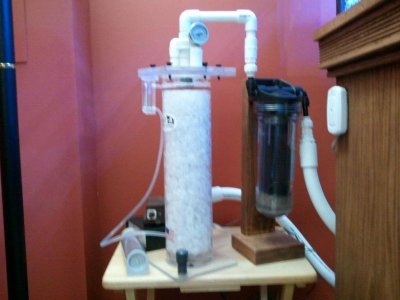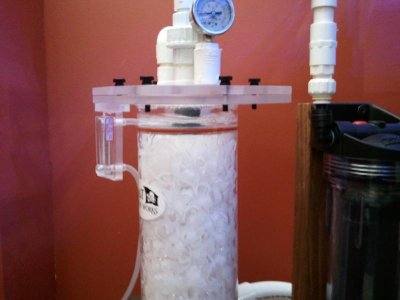jrpark22000
New member
Hi Boomer,
Yes, Avast Marine has their mutiny ozone reactor. I know I found another manf. in my searches but I cannot seem to locate them tonight.
There is a youtube video, 9rHXWBpqdTE : "Trial Avast Mutiny Ozone Reactor" that show the system in operation. In this video they do not have carbon in the carbon reactor, but you can see it fills with air.
This video shows the same system with the carbon reactor filled with carbon but yet still trapping air under pressure; jJyxprkCp6g "Ozone reactor's carbon postfilter"
This system is designed to account for the backpressure you mention above. The system does not bind with air, but burps itself constantly. This burping will make a mess at the point of discharge but this could be taken into consideration when setting the system up.
This air filled carbon reactor has enough dwell time to minimize/eliminate the ozone in the air and still filter the effluent as it dribbles past.
What are your thoughts on the system? I am a noob to ozone. I've learned alot from this thread and other research but still am a sponge. I'll be using 50-75mg/hr with an oversized carbon reactor. I am pretty confidant from the research this solution will work for me w/o ozone smell in the room.
Yes, Avast Marine has their mutiny ozone reactor. I know I found another manf. in my searches but I cannot seem to locate them tonight.
There is a youtube video, 9rHXWBpqdTE : "Trial Avast Mutiny Ozone Reactor" that show the system in operation. In this video they do not have carbon in the carbon reactor, but you can see it fills with air.
This video shows the same system with the carbon reactor filled with carbon but yet still trapping air under pressure; jJyxprkCp6g "Ozone reactor's carbon postfilter"
This system is designed to account for the backpressure you mention above. The system does not bind with air, but burps itself constantly. This burping will make a mess at the point of discharge but this could be taken into consideration when setting the system up.
This air filled carbon reactor has enough dwell time to minimize/eliminate the ozone in the air and still filter the effluent as it dribbles past.
What are your thoughts on the system? I am a noob to ozone. I've learned alot from this thread and other research but still am a sponge. I'll be using 50-75mg/hr with an oversized carbon reactor. I am pretty confidant from the research this solution will work for me w/o ozone smell in the room.






